You have to ask yourself -- as did I: Why is the exhibit currently at the New Mexico Art Museum, in the art-mad capital city of Santa Fe, in multicultural New Mexico, attracting so many visiting artists, scholars and fans of nascent political cartooning? (When I say cartoons, think cartoonists like Mike Luckovich, Rob Rogers and Gary Trudeau.) Because Santa Fe is the only place in American where the exhibit Renaissance to Goya: Prints and Drawings from Spain, will appear. Now winding up a global tour that moved from the British Museum to Madrid, Spain, and Sydney, Australia, the show's last venue is in New Mexico where it remains through March 9. 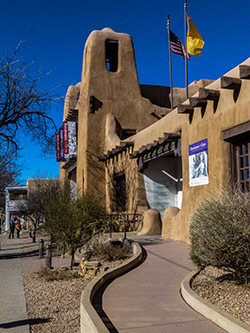
And why, you might ask, did I find a bunch of black and brown scribbles compelling enough to make a hastily planned trip to inspect them? Because I had an extra incentive. My home away from home in Santa Fe, the La Fonda Hotel on the Plaza -- a hotel-cum-museum down to its bones -- advertised a bargain-basement rate per night for a double room, bed-and-breakfast and tickets to the exhibit.
But I would have gone anyway. First of all, the Renaissance to Goya exhibit is small enough to see in a morning, offering a chance to study each of the 132 sketches, pen-and-ink drawings and cartoons (from "carte," meaning "paper," originally these were designs drawn for tapestry weavers). I took my time, lingered in front of each one and came away with some unexpected clues as to how successful artists create and complete the enormous oil paintings that cover the walls of major museums. 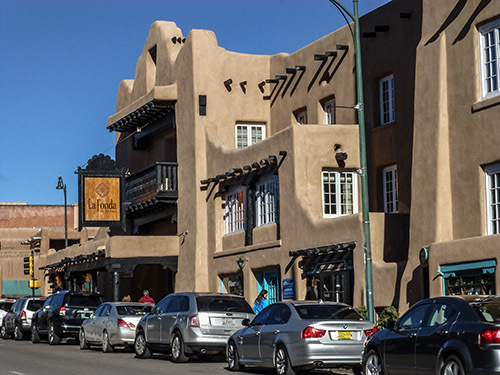
If you compare two or three of Francisco Goya's similar sketches, you'll see how he played with different layouts, trying one angle and then another until he found the most effective way to record what he'd seen and felt. I do the same thing -- more or less -- when I take a photograph, zooming in and out and stepping aside so that the ugly truck or telephone pole won't spoil the sunset. Poets do it when they edit first drafts of poems. A look at copies of the Declaration of Independence, draft one, shows that the Thomas Jefferson wrote it and John Adams and Benjamin Franklin lined out and changed some phrases. 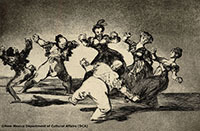
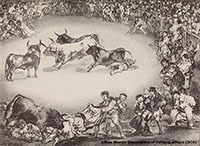
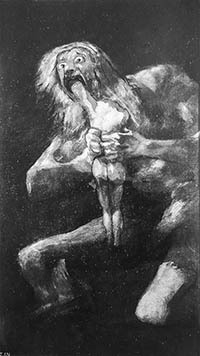
Even more fascinating is the story of the collection itself, much of it assembled by Tomas Harris, a British painter and draftsman, and -- astonishingly -- a MI5 double-agent for Britain during World War II. If it was you or I poking though second-hand book and print stores, like the ones near London's British Museum, we might pass over the ancient and tattered drawings stacked under the posters. But Harris would have recognized them for what they were; eventually he built the largest collection of its kind. On the other hand (as I like to imagine), maybe his underground secret-agent life gave him special access to works of art. You think? After he died (in a car accident after the war) his collection went to the British Museum.
Finally, the majority of the sketches and studies come from one of my favorite artists, painter and print-maker Francisco Goya (1746-1828). Working in Spain during one of that country's years, he lived through war, military sieges, random killings, drought and political repression. The prints he made in the last decades of his life, many for popular publications, are closer to political cartoons than they are to traditional art. Roughly drawn with dark, harsh, quick strokes, they record the horrors of modern war: mutilated corpses, starving peasants and denuded landscapes. They look modern, too, as fresh as if they were drawn yesterday, foreshadowing the Impressionism and Expressionism styles of later years. 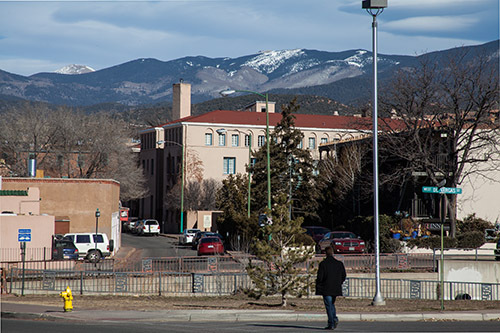
If you can find time to visit Santa Fe before March 10, when the collection goes back to the British Museum's archives, you won't be sorry. Stay where I always do, at the restored La Fonda hotel (upstairs guest rooms only, thank heavens) and you'll sleep and eat among Southwestern art and treasures. It's a five-minute walk from the New Mexico Art Museum. The Renaissance to Goya hotel package starts at $139 per night and includes breakfast for two in La Plazuela (La Fonda's enclosed courtyard restaurant) and tickets to the exhibit.
Photos from the exhibit used in this story are provided courtesy of the New Mexico Department of Cultural Affairs; photos of Santa Fe and of La Fonda are provided courtesy of Steve Haggerty/ColorWorld. Both give their permission to reprint them on The Huffington Post.
Los Angeles writer Anne Z. Cooke revels in every opportunity to explore the highways and byways of New Mexico and Arizona.
